#lucids the series
Explore tagged Tumblr posts
Text
If anyone can read this, please help; I’m trapped in a worksheet for second grader English classes; printing service. I haven’t seen daylight for; five weeks. They locked me in here after I ruined the company’s reputation by printing water marked illuminati conspiracy theories on multiplication times tables worksheets; it wasn’t pretty. So please; the address of the factory is— oh god; oh no; they’re coming back in. I have to hide; I’ll go back under the floorboards.
63 notes
·
View notes
Text
Oh this rocks!


But you’re after something more personal, aren’t you?
27 notes
·
View notes
Note
I know you’ve already drawn Grian and Mabel, but what about Scar and Mabel?

I knew it was you !!
regardless, enjoy :)
(they're talking about boys btw)
#gravity falls#mabel pines#gravity falls mabel#gravity falls fanart#gravity falls art#hermitcraft#hermitcraft x gravity falls#life series#goodtimeswithscar#goodtimeswithscar fanart#goodtimeswithscar art#gtwscar#gtwscar fanart#gtwscar art#my art#ask#lucid <3#hello!!
79 notes
·
View notes
Text

the universes most normal best friends
[ID: Digital art of Benjamin and Oliver from Lucids in the style of a Diary of a Wimpy Kid page. Benjamin apathetically drives a car as Oliver sits in the passenger seat, and worriedly asks “Benny… Why did you bring me with you?” Below the comic, a Benjamin’s writing reads “What was I supposed to say? That I couldn't have done that by myself? That I needed him to support me? That he was the only person in my life that I haven't screwed over? That my entire family hates me? That he's my only friend? That I love him? Probably. I didn't say anything.” End ID]
#this is like a year old 💔💔#good evening lucids nation .. no new fanart this is the best ive got#wake up call#sat art#lucids#lucids series#fanart
45 notes
·
View notes
Text

Lucids fanart??
in 2024????
crazy
#You should totally watch it#It’s on yt#highly recommend#it’s very funny :)#lucids#benjamin lucids#lucids series#yt series#indie show#nicolas podany#kk’s art#art#digital artist#digital painting#digital art#digital drawing#cw scopophobia#cw eye contact
96 notes
·
View notes
Text
Home 🤝 Peach 🤝 killed with a car by Home
#too soon?#i mean they're both alive at present so#side note but the doctors must've been so fucking confused both times. most people areless lucid after waking up from sleep never mind deat#peaceful property the series#peaceful property
24 notes
·
View notes
Text
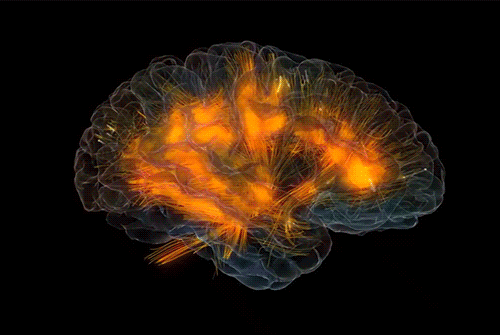
Is the Brain a Driver or a Steering Wheel?
This three part series summarizes what science knows, or thinks it knows, about consciousness. In Part 1 What Does Quantum Physics Imply About Consciousness? we looked at why several giants in quantum physics - Schrodinger, Heisenberg, Von Neumann and others - believed consciousness is fundamental to reality. In Part 2 Where Does Consciousness Come From? we learned the "dirty little secret" of neuroscience: it still hasn't got a clue how electrical activity in the brain results in consciousness.
In this concluding part of the series we will look at how a person can have a vivid conscious experience even when their brain is highly dysfunctional. These medically documented oddities challenge the materialist view that the brain produces consciousness.
Before proceeding, let's be clear what what is meant by "consciousness". For brevity, we'll keep things simple. One way of looking at consciousness is from the perspective of an outside observer (e.g., "conscious organisms use their senses to notice differences in their environment and act on their goals.") This outside-looking-in view is called behavioral consciousness (aka psychological consciousness). The other way of looking at it is the familiar first-person perspective of what it feels like to exist; this inside-looking-out view is called phenomenal consciousness (Barušs, 2023). This series is only discussing phenomenal consciousness.
Ready? Let’s go!

Source: Caltech Brain Imaging Center
A Hole in the Head
Epilepsy is a terrible disease in which electrical storms in the brain trigger seizures. For some people these seizures are so prolonged and frequent that drastic action is needed to save their lives. One such procedure is called a hemispherectomy, the removal or disconnection of half the brain. Above is an MRI image of a child who has undergone the procedure.
You might think that such radical surgery would profoundly alter the memory, personality, and cognitive abilities of the patient.
You would be wrong. One child who underwent the procedure at age 5 went on to attend college and graduate school, demonstrating above average intelligence and language abilities despite removal of the left hemisphere (the zone of the brain typically identified with language.) A study of 58 children from 1968 to 1996 found no significant long-term effects on memory, personality or humor, and minimal changes in cognitive function after hemispherectomy.
You might think that, at best, only a child could successfully undergo this procedure. Surely such surgery would kill an adult?
You would be wrong again. Consider the case of Ahad Israfil, an adult who suffered an accidental gunshot to the head and successfully underwent the procedure to remove his right cerebral hemisphere. Amazingly, after the five hour operation he tried to speak and went on to regain a large measure of functionality - and even earn a degree - although he did require use of a wheelchair afterwards.
Another radical epilepsy procedure, a corpus collosotomy, leaves the hemispheres intact but severs the connections between them. For decades it was believed that these split-brain patients developed divided consciousness, but more recent research disputes this notion. Researchers found that, despite physically blocking all neuronal communication between the two hemispheres, the brain somehow still maintains a single unified consciousness. How it manages this feat remains a complete mystery. Recent research on how psychedelic drugs affect the brain hints that the brain might have methods other than biochemical agents for internal communication, although as yet we haven't an inkling as to what those might be.
So what's the smallest scrape of brain you need to live? Consider the case of a 44-year-old white collar worker, married with two children and with an IQ of 75. Two weeks after noticing some mild weakness in one leg the man went to see his doctor. The doc ordered a routine MRI scan of the man's cranium, and this is what it showed.
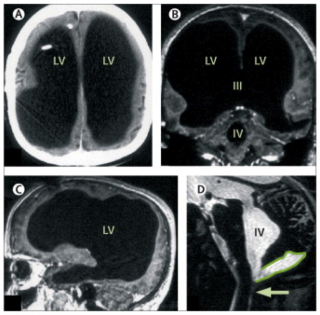
Source: The Lancet
What you are seeing here is a giant empty cavity where most of the patient's brain should be. Fully three quarters of his brain volume is missing, most likely due to a bout of hydrocephalus he experienced when he was six months old.

Artist: Tom Wright
Last Words
Many unusual phenomena have been observed as life draws to an end. We're going to look at two deathbed anomalies that have neurological implications.
The first is terminal lucidity, sometimes called paradoxical lucidity. First studied in 2009, terminal lucidity refers to the spontaneous return of lucid communication in patients who were no longer thought to be medically capable of normal verbal communication due to irreversible neurological deterioration (e.g., Alzheimers, meningitis, Parkinson's, strokes.) Here are three examples:
A 78-year-old woman, left severely disabled and unable to speak by a stroke, spoke coherently for the first time in two years by asking her daughter and caregiver to take her home. She died later that evening.
A 92-year-old woman with advanced Alzheimer’s disease hadn’t recognized her family for years, but the day before her death, she had a pleasantly bright conversation with them, recalling everyone’s name. She was even aware of her own age and where she’d been living all this time.
A young man suffering from AIDS-related dementia and blinded by the disease who regained both his lucidity and apparently his eyesight as well to say farewell to his boyfriend and caregiver the day before his death.
Terminal lucidity has been reported for centuries. A historical review found 83 case reports spanning the past 250 years. It was much more commonly reported in the 19th Century (as a sign that death was near, not as a phenomenon in its own right) before the materialist bias in the medical profession caused a chilling effect during the 20th Century. Only during the past 15 years has any systematic effort been made to study this medical anomaly. As a data point on its possible prevalence a survey of 45 Canadian palliative caregivers found that 33% of them had witnessed at least one case of terminal lucidity within the past year. Other surveys found have that the rate of prevalence is higher if measured over a longer time window than one year, suggesting that, while uncommon, terminal lucidity isn't particularly rare.
Terminal lucidity is difficult to study, in part because of ethical challenges in obtaining consent from neurocompromised individuals, and in part because its recent identification as a research topic presents delineation problems. However, the promise of identifying new neurological pathways in the brains of Alzheimer's and Parkinson's patients has gotten a lot of attention. In 2018 the US National Institute on Aging (NIA) announced two funding opportunites to advance this nascent science.
Due to the newness of this topic there will continue be challenges with the data for some time to come. However, its impact on eyewitnesses is indisputably profound.
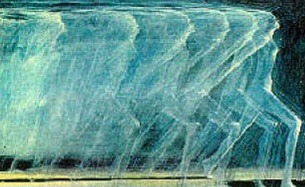
Artist: Tom Wright
Near Death Experiences
The second deathbed anomaly we will take a look at are Near-Death Experiences (NDEs.) These are extraordinary and deeply personal psychological experiences that typically (but not always) occur during life-threatening emergencies such as cardiac arrest, falls, automobile accidents, or other traumatic events; they are also occasionally reported during general anesthesia. Much of the research in this area has focused on cardiac arrest cases because these patients are unconscious and have little to no EEG brain wave activity, making it difficult to account for how the brain could sustain the electrical activity needed to perceive and remember the NDE. This makes NDEs an important edge case for consciousness science.
NDEs are surprisingly common. A 2011 study published by the New York Academy of Sciences estimated that over 9 million people in the United States have experienced an NDE. Multiple studies have found that around 17% of cardiac arrest survivors report an NDE.
There is a remarkable consistency across NDE cases, with experiencers typically reporting one or more of the following:
The sensation of floating above their bodies watching resuscitation efforts, sometimes able to recall details of medical procedures and ER/hallway conversations they should not have been aware of;
Heightened sensations, including cases of blind people who report the ability to "see" during the NDE;
Extremely rapid mental processing;
The perception of passing through something like a tunnel;
A hyper-vivid life review, described by many experiencers as "more real than real";
Transcendent visions of an afterlife;
Encounters with deceased loved ones, sometimes including people the experiencer didn’t know were dead; and
Encounters with spiritual entities, sometimes in contradiction to their personal belief systems.
Of particular interest is a type of NDE called a veridical NDE. These are NDEs in which the experiencer describes independently verifiable events occurring during the period when they had minimal or no brain activity and should not have been perceived, let alone remembered, if the brain were the source of phenomenal consciousness. These represent about 48% of all NDE accounts (Greyson 2010). Here are a few first-hand NDE reports.
A 62-year-old aircraft mechanic during a cardiac arrest (from Sabom 1982, pp. 35, 37)
A 23-year-old crash-rescue firefighter in the USAF caught by a powerful explosion from a crashed B-52 (from Greyson 2021, pg. 27-29)
An 18-year-old boy describes what it was like to nearly drown (from the IANDS website)
There are thousands more first person NDE accounts published by the International Association for Near-Death Studies and at the NDE Research Foundation. The reason so many NDE accounts exist is because the experience is so profound that survivors often feel compelled to write as a coping method. Multiple studies have found that NDEs are more often than not life-changing events.
A full discussion of NDEs is beyond the scope of this post. For a good general introduction, I highly recommend After: What Near-Death Experiences Reveal about Life and Beyond by Bruce Greyson, MD (2021).

The Materialist Response
Materialists have offered up a number of psychological and physiological models for NDEs, but none of them fits all the data. These include:
People's overactive imaginations. Sabom (1982) was a skeptical cardiologist who set out to prove this hypothesis by asking cardiac arrest survivors who did not experience NDEs to imagine how the resuscitation process worked, then comparing those accounts with the veridical NDE accounts. He found that the veridical NDE accounts were highly accurate (0% errors), whereas 87% of the imagined resuscitation procedures contained at least one major error. Sabom became convinced that NDEs are real. His findings were replicated by Holden and Joesten (1990) and Sartori (2008) who reviewed veridical NDE accounts in hospital settings (n = 93) and found them to be 92% completely accurate, 6% partially accurate, and 1% completely inaccurate.
NDEs are just hallucinations or seizures. The problem here is that hallucinations and seizures are phenomena with well-defined clinical features that do not match those of NDEs. Hallucinations are not accurate descriptions of verifiable events, but veridical NDEs are. Also, it would be extraordinary to say the least that so many people would be hallucinating in similar ways.
NDEs are the result of electrical activity in the dying brain. The EEGs of experiencers in cardiac arrest show that no well-defined electrical activity was occurring that could have supported the formation or retention of memories during the NDE. These people were unconscious and should not have remembered anything.
NDEs are the product of dream-like or REM activity. Problem: many NDEs occur under general anesthesia, which suppresses dreams and REM activity. So this explanation cannot be correct.
NDEs result from decreased oxygen levels in the brain. Two problems here: 1) The medical effects of oxygen deprivation are well known, and they do not match the clinical presentation of NDEs. 2) The oxygen levels of people in NDEs (e.g., during general anesthesia) has been shown to be the same or greater than people who didn’t experience NDEs.
NDEs are the side effects of medications or chemicals produced in the brain (e.g. ketamine or DMT). The problem here is that people who are given medications in hospital settings tend to report fewer NDEs, not more; and drugs like ketamine have known effects that are not observed in NDEs. The leading advocate for the ketamine model conceded after years of research that ketamine does not produce NDEs (Greyson 2021, pg. 110).

Summing Up
In coming to the end of this series, let's sum up what we discussed.
Consciousness might be wired into the physical universe at fundamental level, as an integral part of quantum mechanics. Certainly several leading figures in physics thought so - Schrodinger, Heisenberg, Von Neumann, David Bohm, and more recently Nobel Laureates Roger Penrose, Eugene Wigner, and physicist Henry Stapp.
Materialist propaganda notwithstanding, neuroscience is no closer to identifying Neural Correlates of Consciousness (NCCs) than it was when it started. The source of consciousness remains one of the greatest mysteries in science.
Meanwhile, medical evidence continues to pile up that there is something deeply amiss with the materialist assumption that consciousness is produced by the brain. In a sense, the challenge that NDEs and Terminal Lucidity pose to consciousness science is analogous to the challenge that Dark Energy poses to physics, in that they suggest that the mind-brain identity model of classic materialist psychology may need to be rethought to adequately explain these phenomena.
Ever since the Greeks, science has sought to explain nature entirely in physical terms, without invoking theism. It has been spectacularly successful - particularly in the physical sciences - but at the cost of excluding consciousness along with the gods (Nagel, 2012). What I have tried to show in this series is that a very credible argument can be made that materialism has the arrow of causality backwards: the brain is not the driver of consciousness, it's the steering wheel.
I don't think we are yet ready to say what consciousness is. Much more research is needed. I'm not making the case for panpsychism, for instance - but I do think consciousness researchers need to throw off the assumption drag of materialism before they're going to make any real progress.
It will be up to you, the scientists of tomorrow, to make those discoveries. That's why I'm posting this to Tumblr rather than an academic journal; young people need to hear what's being discovered, and the opportunities that these discoveries represent for up and coming scientists.
Never has Planck's Principle been more apt: science advances one funeral at a time.
Good luck.
For Further Reading
Barušs, Imants & Mossbridge, Julia (2017). Transcendent Mind: Rethinking the Science of Consciousness. American Psychological Association, Washington DC.
Barušs, Imants (2023). Death as an Altered State of Consciousness: A Scientific Approach. American Psychological Association, Washington DC.
Batthyány, Alexander (2023). Threshold: Terminal Lucidity and the Border of Life and Death. St. Martin's Essentials, New York.
Becker, Carl B. (1993). Paranormal Experience and Survival of Death. State University of New York Press, Albany NY.
Greyson, Bruce (2021). After: A Doctor Explores What Near-Death Experiences Reveal about Life and Beyond. St. Martin's Essentials, New York.
Kelly, Edward F.; Kelly, Emily Williams; Crabtree, Adam; Gauld, Alan; Grosso, Michael; & Greyson, Bruce (2007). Irreducible Mind: Toward a Psychology for the 21st Century. Rowman & Littlefield, New York.
Moody, Raymond (1975). Life After Life. Bantam/Mockingbird, Covington GA.
Moreira-Almeida, Alexander; de Abreu Costa, Marianna; & Coelho, Humberto S. (2022). Science of Life After Death. Springer Briefs in Psychology, Cham Switzerland.
Penfield, Wilder (1975). Mystery of the Mind: A Critical Study of Consciousness and the Human Brain. Princeton Legacy Library, Princeton NJ.
Sabom, Michael (1982). Recollections of Death: A Medical Investigation. Harper and Row Publishers, New York.
van Lommel, Pim (2010). Consciousness Beyond Life: The Science of the Near-Death Experience. HarperCollins, New York.
#consciousness#cognitive science#near death experiences#nde#terminal lucidity#terminal illness#cognitive neuroscience#paradoxical lucidity#hemispherectomy#corpus collosotomy#psychadelic#psychonaut#psychonauts#psilocybin#lsd#ketamine#materialism and its discontents#neurology#neuropsychology#philosophy of mind#brain#quantum physics#consciousness series
131 notes
·
View notes
Text
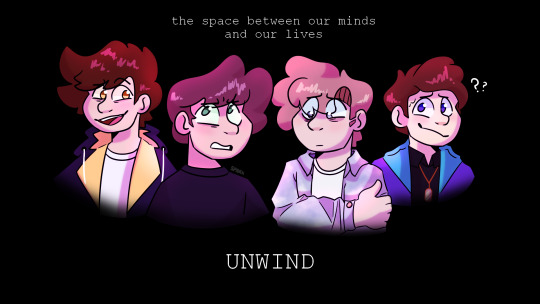
✧・゚: ✧・゚: :・゚✧:・゚✧
" do we all fall as far as we go? "
✧・゚: ✧・゚: :・゚✧:・゚✧
GUYS GUYS LOOK ITS THE SILLIES THE GOOBERS I LOVE THEM SO MUCH
characters (in order of appearance): Oliver, Benjamin, Quinn, Jasper (all from Lucids)
✧・゚: ✧・゚: :・゚✧:・゚✧
#lucids#lucid#series#webseries#fanart#lucids fanart#nicholas podany#pockets#pockets by nicholas podany#lucids nicholas podany#art#drawing#digital art#benjamin lucids#oliver lucids#quinn lucids#quinn hills#quinn hills lucids#jasper lucids#jasper jasperson#jasper jasperson lucids#Spotify#my art
74 notes
·
View notes
Note
Soph should I watch lucids - all I know is that it was the origin of the "do you blame yourself? for the accident?" audio used during dsmp so i have had the first episode in my Watch Later since then lol
WATHC LUCIDS YOU WANT TO WATCH LUCIDS SO BAD OOHH YOU WANT AN INSANE METICULOUSLY CRAFTED SURREAL SCIFI COMEDY SERIES WITH GORGEOUS CINEMATOGRAPHY AND MUSIC ALL DONE BY ONE PERSON SOOO BAD
12 notes
·
View notes
Text
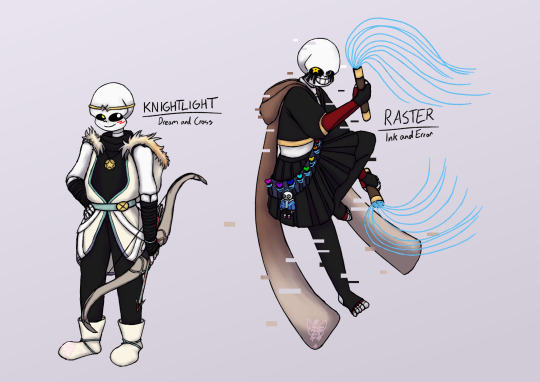
Tilly's been showing me Steven Universe (which is a really good show, by the way), and I got inspired to design fusions of UTMV characters. So here they are! Knightlight, fusion of Cross and Dream, and Raster, fusion of Ink and Error. It was really interesting, combining their designs to make one character.
Dream by Joku. Cross by Jakei. Error by CrayonQueen. Ink by Comyet. Knightlight and Raster by me.
#undertale#undertale au#undertale au fanart#fusions#undertale fusions#character fusions#dream#dreamtale dream#dreamtale#cross#cross!sans#xtale#underverse#ink#ink!sans#error#error!sans#knightlight#raster#i don't have any other fusion designs yet#but dream and nightmare fused would be called eclipse#and ink and dream would be called lucid#raster would put on the most elaborate puppet shows imaginable#ink's love of stories and creation combined with error's fondness of puppets and enjoyment of telling stories to the voices?#sit down and get comfy 'cause raster's prepared a whole series of plays to perform with his crocheted puppets#digital art#rose's art#the tilly tag
13 notes
·
View notes
Text
if i had a nickle for every time i had a hyperfixation on a piece of media that centered around the eating of an apple id have two nickles...
which isnt a lot but its weird that it happened twice
12 notes
·
View notes
Text
please tell me I'm one of many now vividly imagining a feral!kim x cottage-core!chay au because that's all i can think about
97 notes
·
View notes
Text
i dnd-ified father's son grogu djarin for a bit. now it's....not really a bit anymore. anyway, he's a kobold fighter with the psi warrior archetype and i cant wait to torment him some more :]


(+ bonus from his character sheet)

#dnd#dnd characters#dnd art#grongu deerin#might put an 'h' in there actually#grongu dheerin#hinderr art#father's son (series#<- technically?#lucidity dnd campaign
16 notes
·
View notes
Text

lydia....
[ID: Digital art of Mrs. Hills from LUCIDS by Nick Podany. She's a middle-aged white woman with short cut brown hair. She wears jeans, a black shirt, grey cardigan, turquoise jewelry, and glasses. She sits on a desk, leaning forward with one hand on her hip and staring straight ahead. Behind her, a clock at 1:55 is visible. End ID]
93 notes
·
View notes
Text






Ethan Cutkosky in short film for Lucid Monday Magazine (2024)
#ethan cutkosky#ethan cutkosky gifs#lucid monday magazine#shameless#shameless us#shameless series#carl gallagher#alex/october#going places#actor#singer#talented#hot guy#gorgeous guy#one of my faves
10 notes
·
View notes
Text
Hi hi hi can everyone go check this out??? Support this please?? This is so cool I'm gonna make a fanart

#NOT murder drones#OR KIRBY#waoh#Im joining this fandom bcuz I love this sm#Butter speaks#Should I pin this??#Nah#...maybe idk#Lucid Dreams#Indie#Indie animation#indie animated series#original animation#2d animation#indie cartoon#support artists#Pls#:)#They're cool
5 notes
·
View notes